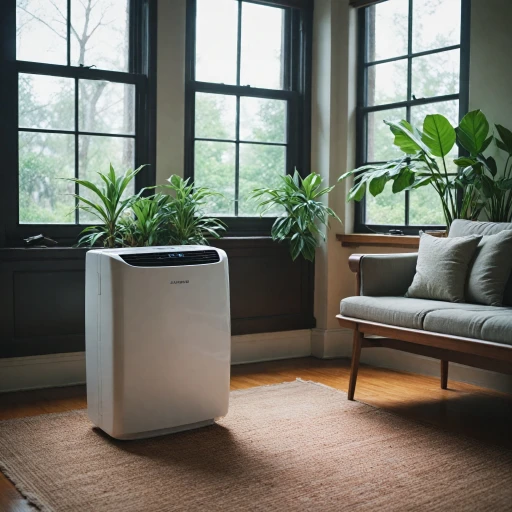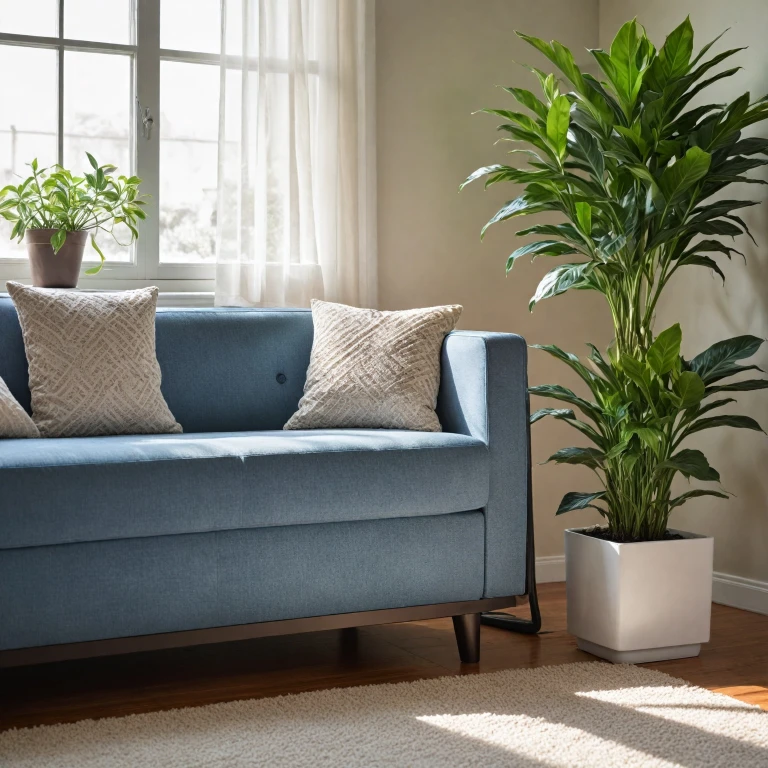How Portable Air Conditioners Work
Mechanisms Behind Portable Air Conditioners
Portable air conditioners function by removing warm air from a room and replacing it with cool air, much in the same way as traditional AC units. However, portable units are designed to be mobile and often require a window or vent to expel the hot air. These units usually consist of a single or dual hose system that aid in transferring heat effectively.
Portable ACs utilize refrigerated cooling to lower the temperature in a room. They work by using a fan to draw in warm air, which is then cooled using a refrigerant and an evaporator coil. The heat collected is expelled outside through an exhaust hose, usually via a window. Portable units are quite versatile and do not demand extensive installation.
Different types of portable air conditioners can cater to different needs. Single hose portable units are easier to install and are typically more affordable, while dual hose units provide improved efficiency by using one hose for intake and another for exhaust. Dual hose systems, like the Midea Duo, are generally regarded as more energy efficient, especially in larger rooms.
A notable innovation in the realm of portable air conditioning is the Ecoflow Wave, which exemplifies the best in class for mobile cooling solutions. It illustrates how technological advancements refine cooling efficiency while optimizing energy usage, an essential feature for eco-conscious consumers.
Understanding how portable air conditioners work not only helps in making an educated purchase decision but also aids in evaluating the energy efficiency and cooling capacity of different models. For those considering alternative cooling methods, exploring the benefits of a portable swamp cooler might provide valuable insights.
Discover more here.
Evaluating Cooling Efficiency
Determining the Air Conditioning Output
Understanding the cooling efficiency of portable air conditioners is crucial for making an informed purchase decision. Since portable units use British Thermal Units (BTU) as a measure of cooling power, it's vital to select a model with an appropriate BTU rating for your room size. Generally, higher BTU ratings indicate more robust cooling capabilities, but they come with increased energy consumption.
Single vs. Dual Hose Systems
Portable air conditioners are available in both single hose and dual hose configurations, with each offering distinct cooling dynamics. A single hose unit draws warm indoor air, cools it, and expels some hot air through the exhaust hose back into the room, which might reduce overall efficiency. In contrast, dual hose systems have two separate hoses: one for air intake and another for exhaust, minimizing negative pressure and enhancing efficiency.
Energy Efficiency Ratings
Assessing the energy efficiency of portable ACs is pivotal for reducing power consumption and preserving the environment. Models like the EcoFlow Wave and Midea Duo boast advanced eco-friendly features, supporting sustainable cooling solutions. They show that prioritizing energy-efficient units not only reduces electricity bills but contributes positively to the environment.
Heat Exchange Processes
To gauge cooling effectiveness, it's beneficial to comprehend how portable conditioners work in rejecting heat. Typically, an air conditioner cools by absorbing heat from the room air and releasing it outdoors. This heat exchange process is optimized with a proper hose setup. Ensuring no obstructions in the exhaust hose maximizes the discharge of hot air and the intake of cooler air.
Explore More
For those looking to delve deeper into selecting the ideal personal AC, exploring https://www.portable-air-conditioner-guru.com/blog/choosing-the-right-personal-ac-unit-for-your-needs may offer clear guidelines and comparisons, tailored to meet different home cooling demands.
Benefits of Using Portable Air Conditioners
Advantages of Portable Air Conditioners
Portable air conditioners offer a range of benefits that make them an attractive option for many homeowners and renters. Their flexibility and ease of use are among the top reasons people choose these units over traditional air conditioning systems. Here are some key advantages:
- Mobility: One of the standout features of portable air conditioners is their mobility. Unlike fixed units, these can be moved from room to room, allowing you to cool specific areas as needed. This is particularly useful in homes where certain rooms get hotter than others.
- Easy Installation: Setting up a portable air conditioner is generally straightforward. Most units come with a window kit and an exhaust hose, making it easy to vent hot air outside. This simplicity means you can start cooling your space without the need for professional installation.
- Space-Saving Design: Portable units are compact and designed to fit in small spaces. This makes them ideal for apartments or rooms where space is at a premium. Despite their size, many models offer powerful cooling capabilities.
- Energy Efficiency: Many modern portable air conditioners are designed with energy efficiency in mind. Models like the EcoFlow Wave and Midea Duo are known for their efficient cooling and low energy consumption, helping you save on electricity bills.
- Dual Functionality: Some portable air conditioners also offer heating capabilities, making them useful year-round. This dual functionality can be a cost-effective way to manage both cooling and heating needs in your home.
While portable air conditioners have many benefits, it's important to consider their limitations and how they compare to traditional systems. Understanding these factors can help you make an informed decision about whether a portable unit is the right choice for your cooling needs.
Challenges and Limitations
Potential Drawbacks of Portable Cooling Solutions
When considering a portable air conditioner, it's crucial to weigh its potential challenges and limitations. While these units provide significant convenience and flexibility, there are certain aspects that might not make them the optimal choice for everyone.
First and foremost is the cooling efficiency. Portable units, especially single-hose models, can struggle to cool larger spaces effectively. Single hose models often create a negative pressure in the room, which can lead to warm air seeping in from outside, counteracting their cooling efforts. In terms of BTU output, it’s important to select a unit that can adequately handle the size of the room. However, for those looking to cool smaller rooms or require temporary cooling, a portable air conditioner can still be a viable option.
Moreover, the need for proper exhaust setup cannot be overlooked. Portable units typically require a window or similar outlet to expel hot air. This means users must ensure that their room configuration can accommodate the exhaust hose, which can be a challenge in certain layouts.
Energy efficiency is another consideration. Portable air conditioners tend to consume more energy compared to their traditional counterparts. Models like the EcoFlow Wave and Midea Duo offer improved efficiency, but generally, portable units can result in higher energy costs. Factors like dual hose designs typically provide better performance and can mitigate some efficiency concerns by not hindering the intake of cool air.
Noise levels may also be a concern for some users. Due to their movable nature, portable ACs can be noisier than window or split units, which could be disruptive in a quieter setting.
In summary, while portable air conditioners offer flexibility and ease of installation, they come with challenges that need to be carefully evaluated to ensure they meet your cooling needs effectively. Consider assessing the size of the room, possible window configurations, and the unit’s energy efficiency ratings to make an informed decision.
Comparing Portable and Traditional Air Conditioners
Contrasting Options in Air Conditioning
When comparing portable air conditioners to traditional air conditioning systems, it's essential to consider their unique features. Portable air units provide flexibility by allowing movement from room to room. These units typically feature either a single or dual hose design, impacting their energy efficiency and cooling capacity. Single hose units pull in air from a room and expel hot air through one hose. Dual hose designs, on the other hand, utilize one hose to intake air and another to expel hot air, often resulting in more efficient cooling.
Traditional air conditioners, such as window or central systems, tend to offer a higher BTU output and larger cooling capacity suitable for expansive spaces. However, installing these systems is more complex and can be costly. Portable units present a convenient solution for smaller spaces or situations where permanent installation isn't feasible, but their cooling efficiency generally can't match that of traditional systems.
Portable AC units, such as the EcoFlow Wave and Midea Duo, are notable for their innovations in energy-efficient operation and heat adjustment capabilities. While central and window air conditioners provide consistent cooling across larger areas, portable air conditioners are the best choice for those wanting flexibility and immediate cooling relief in individual rooms. Portables are especially advantageous in office or rental settings where alterations to the structure are not allowed.
Ultimately, the decision between portable air conditioners and traditional systems depends on personal circumstances, including room size, energy consumption preferences, and specific cooling needs. Consider these factors carefully to ensure you choose the most suitable air conditioning solution for your environment.
Boosting Your Portable Air Conditioner's Efficiency
Maximizing the performance of your portable air conditioner is crucial to ensuring efficient cooling and energy consumption. Here are some expert tips to enhance your unit's capabilities:
- Optimal Placement: Position your portable unit in a location where airflow is unobstructed, ideally near a window for the exhaust hose. This strategic placement helps in effective expulsion of hot air, ensuring the intake of cool air into your room.
- Regular Maintenance: Clean or replace filters frequently to maintain airflow and improve the air conditioner's efficiency. Dust accumulation can significantly reduce cooling estimates.
- Proper Sealing: Ensure all window gaps around the window kit are sealed tight. Even small leaks can allow hot air to seep in, reducing the overall cooling efficiency of your portable ACS.
- Ditch the Sun: Keeping curtains closed during the hottest parts of the day can reduce the workload on your air conditioner. Lowering heat gain in your room results in better performance of the unit.
- Dual vs. Single Hose: Opt for dual hose models when possible. Although single hose units are sufficient for smaller spaces, dual hose units provide more efficient cooling by preventing negative pressure issues.
Know more about the difference between dual and single hose portable units in the [comparison section].
- EcoFlow and Smart Modes: Some models come with smart features and eco modes, such as EcoFlow Wave or Midea Duo, which optimize cooling while minimizing energy use. Familiarize yourself with these features to improve efficiency.
- BTU Appropriateness: Match the BTU rating of your unit to the size of the room. Undersized units won't cool effectively, while oversized units cycle on and off too frequently, wasting energy.
Keeping these effective strategies in mind can make sure your portable air conditioner works at its best, ensuring a comfortable, cool room with minimal energy wastage.

